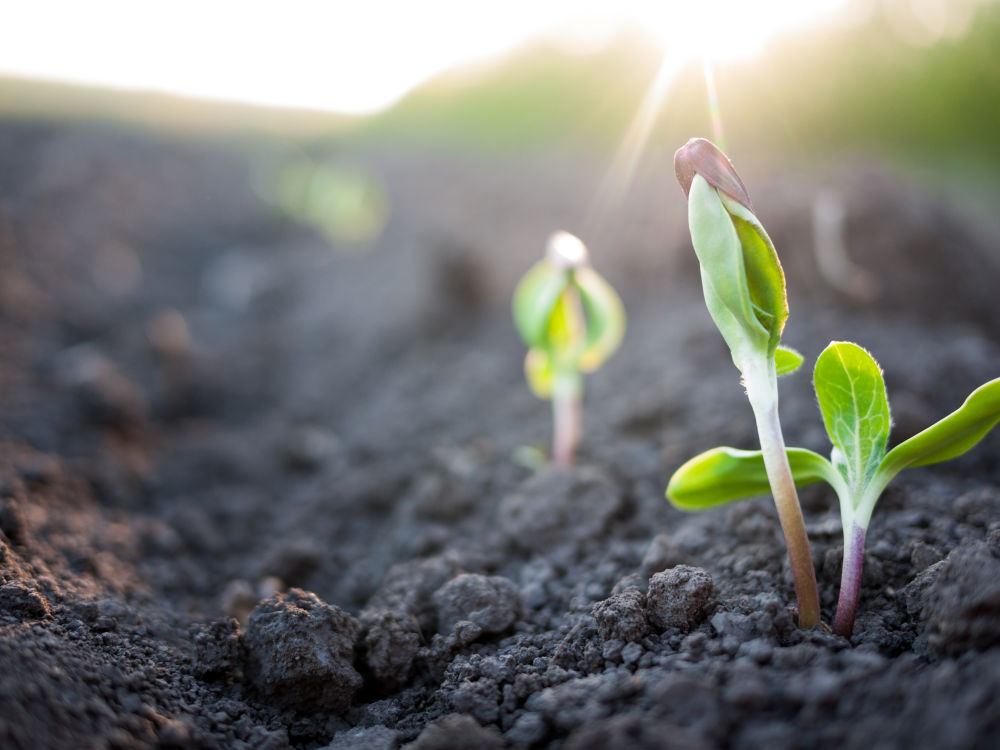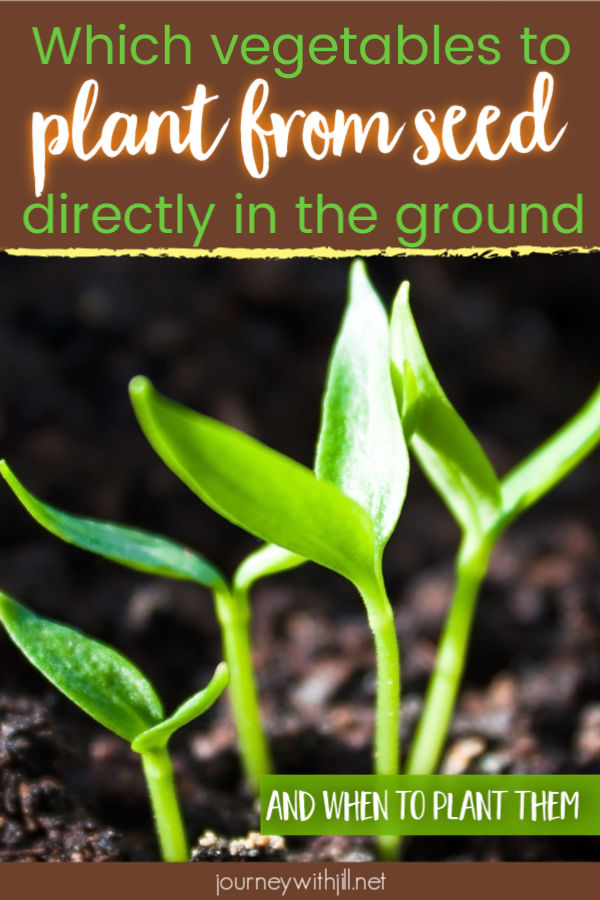Planting Seeds Directly in the Garden: Which vegetables and when to sow?
If you’re a beginning gardener, you may wonder, “Can I plant seeds directly in the ground?”
We commonly think of transplanting baby plants when we begin a new garden, but which crops should you start from seed outdoors — directly in the garden — and when do you plant them?
That’s such a great question and one many beginners ask!
Most first-year gardeners purchase all of their vegetable starts from garden stores and don’t even think about planting seeds. But many crops actually do better if you sow them outdoors from seed.
These plants perform better, seeds cost you less than transplants, and you have a wider variety of plant options. Planting seeds directly in the ground definitely has its advantages!
Which Seeds Should You Plant Directly in the Garden?
The vegetables I plant from seed outdoors are peas, carrots, beans, corn, squash, zucchini, cucumbers, okra, black-eyed peas, watermelon, cantaloupe, lettuce, and basil. Most of these crops don’t adjust well to transplanting. They do best when they’re planted directly in the garden soil. Seasoned gardeners can successfully transplant squash, cucumbers, melons, and okra. But crops like carrots, beans, and black-eyed peas should always be directly sown in the ground.
When Do You Plant Seeds Outside?
There are two keys to knowing when to plant your seeds outdoors: your average last frost date and the soil temperature.
Average Last Frost Date
The reason the last frost date is so important is that most of the plants mentioned above will not tolerate a frost (the exceptions are peas, carrots, and lettuce). The last thing you want is those beautiful seedlings being hit with a frost and they’re dead before they ever had a chance.
Seed packets will recommend planting your warm weather crops after the danger of frost has passed. Sometimes though, depending on the year, I will plant them in the ground as early as a week before the last average frost. It takes about a week for the seeds to germinate. If any late frost threatens, I will cover the seedlings with upside down pots.
In my zone 7 area in Arkansas, it’s around April 1st. (Click here to see your average last frost date on a map. You can also plug in your zip code to calculate your last frost date here.)
*disclosure: links below are affiliate links, which means if you click through and make a purchase, I will receive a commission. View full disclosure and privacy policy at the bottom of this page.

Soil Temperature
It is also very important to check the temperature of the soil when directly planting seeds in the garden. This is especially important when planting before or around your average last frost date. The seeds of warm weather crops won’t germinate at all with soil temperatures under 60F. Many need temperatures above 70F. Also, if the soil is wet, they’ll likely rot in the ground with cool, wet conditions. You can find a soil thermometer at most garden stores. This is an inexpensive soil thermometer I use year after year.
Cool season crops like peas, carrots, and lettuce will germinate at slightly lower temperatures. Not only can they tolerate a frost, but they also don’t do well in heat. I plant them about a month to six weeks before my average last frost date.
Okra, on the other extreme, loves heat and won’t germinate with cool soil or grow in mild weather. So, I wait to plant them in early May — a full month after my average last frost date. I also tend to wait a few weeks in planting my melons for the same reason. However, you’ll need to consider how long your growing season is because melons can take a long time to harvest.
For a handy quick-reference guide to seed starting and soil temperature, click here.
If You’re Still Not Sure When to Plant Seeds
Unless you live in a short-season climate, it’s best to err on the side of planting late rather than too soon. Here are some reasons it’s more beneficial to wait. Summer crops languish in cool, wet soil, and they’ll get off to a better start if you wait a week or two.
Of course, I tend to let nature be my guide. If spring seems to be arriving early, I’ll probably begin putting my seeds in the ground a couple of weeks earlier than usual. But if we can’t seem to get away from late cold fronts, I’ll wait.
For a more detailed list on which crops to plant in the garden directly, check out these 9 Vegetables You Should Only Plant From Seed.
Seed Starting Quick Reference Guide
Which seeds should you start indoors? Which should you wait to plant directly in the garden? When? And in what soil temperatures do certain seeds germinate better? Grab this one-page quick reference guide to get your seeds sprouting and your plants growing strong!
Plus, I'll send you my "In the Garden E-mail" on Fridays, periodic updates on garden resources relevant to you, and get access to my entire bank of free garden downloads!
You are also agreeing to our privacy policy.



Great info. Very helpful.